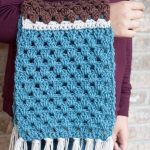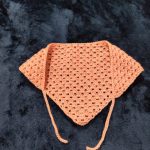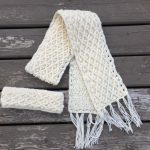Revolutionize Your Foot Health With Scarf Osteotomy: The Cutting-Edge Solution Awaited
Scarf Osteotomy: A Revolutionary Procedure for Foot Alignment
Introduction
Dear Scarf Wearer,
2 Picture Gallery: Revolutionize Your Foot Health With Scarf Osteotomy: The Cutting-Edge Solution Awaited
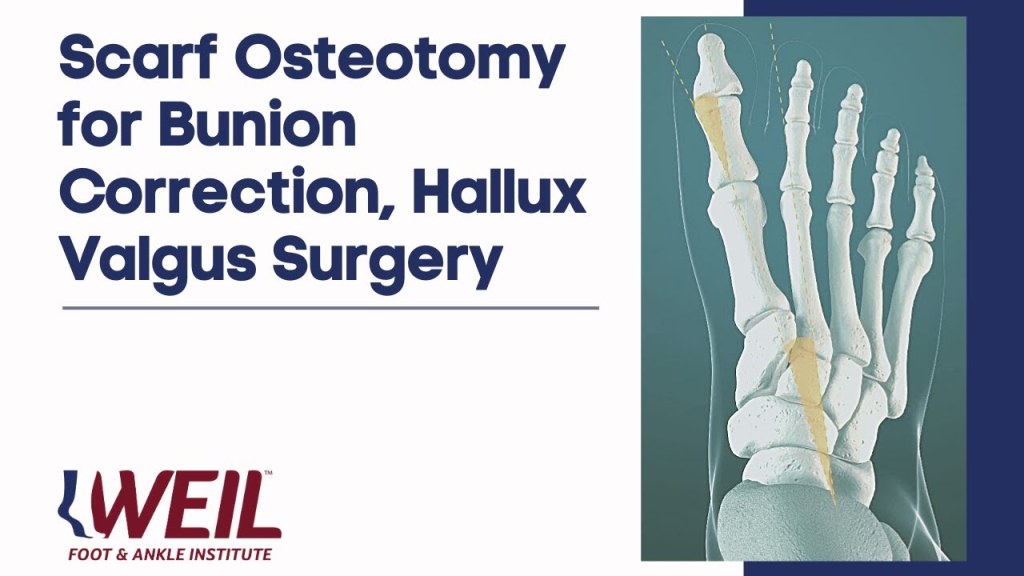
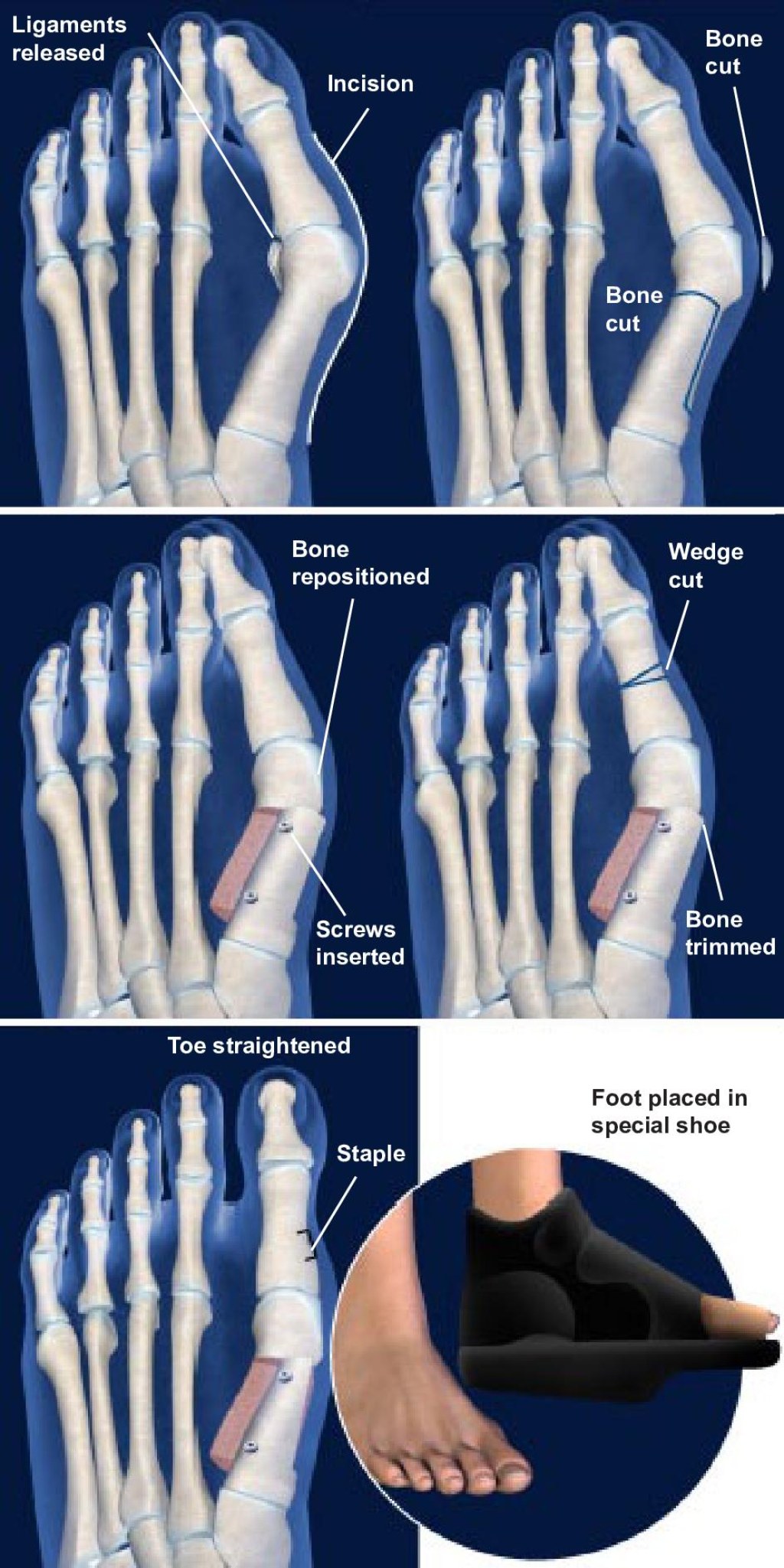
Are you tired of suffering from foot pain caused by misaligned bones? Do you dream of finding a solution that will alleviate your discomfort and improve your quality of life? Look no further! In this article, we will introduce you to the groundbreaking procedure known as scarf osteotomy. Get ready to say goodbye to your foot woes and hello to a pain-free future.

Image Source: ytimg.com
In this comprehensive guide, we will delve into the what, who, when, where, why, and how of scarf osteotomy. Find out how this procedure works, who can benefit from it, when it is recommended, where it is performed, why it is considered a game-changer, and how it can improve your overall foot health. Read on to discover the advantages and disadvantages of scarf osteotomy, as well as answers to frequently asked questions. By the end of this article, you will be equipped with all the knowledge you need to make an informed decision about this transformative procedure.
What is Scarf Osteotomy?
📕 Scarf osteotomy is a surgical procedure used to correct foot deformities such as bunions and hallux valgus. It involves making precise cuts in the metatarsal bones of the foot and realigning them to improve foot function and alleviate pain.

Image Source: swarminteractive.com
📕 During the procedure, a skilled orthopedic surgeon carefully reshapes the bones and secures them in their new position with screws or pins. This ensures proper alignment and stability, allowing the foot to bear weight evenly and reducing strain on surrounding structures.
📕 Scarf osteotomy is known for its versatility, as it can correct multiple aspects of foot deformities simultaneously, leading to better overall outcomes for patients.
📕 The procedure derives its name from the scarf-like shape of the bone cuts made during surgery, which helps distribute weight more evenly across the foot.
📕 Scarf osteotomy is a time-tested and proven procedure that has gained popularity among both patients and medical professionals due to its effectiveness in improving foot alignment and function.
📕 It is important to note that scarf osteotomy is not suitable for everyone, and a thorough evaluation by a qualified orthopedic surgeon is necessary to determine its appropriateness for individual cases.
📕 Now that you have a general understanding of what scarf osteotomy entails, let’s explore who can benefit from this procedure.
Who Can Benefit from Scarf Osteotomy?
📕 Scarf osteotomy is primarily recommended for individuals suffering from foot deformities such as bunions and hallux valgus. These conditions are characterized by the misalignment of the big toe joint, leading to pain, difficulty walking, and limited mobility.
📕 If you are experiencing persistent foot pain, swelling, or limited range of motion due to a bunion or hallux valgus, scarf osteotomy may be a viable treatment option for you.
📕 It is important to consult with a qualified orthopedic surgeon who specializes in foot and ankle conditions to determine whether scarf osteotomy is the right choice for you. They will assess your specific condition, medical history, and lifestyle factors to provide personalized recommendations.
📕 In general, scarf osteotomy is suitable for patients who have tried conservative treatments such as orthotics, physical therapy, and pain medication without significant improvement.
📕 Keep in mind that there may be certain contraindications for scarf osteotomy, such as severe osteoporosis, uncontrolled diabetes, or peripheral vascular disease. Your orthopedic surgeon will thoroughly evaluate your overall health before recommending this procedure.
📕 Now that you know who can benefit from scarf osteotomy, let’s explore when this procedure is typically recommended.
When is Scarf Osteotomy Recommended?
📕 Scarf osteotomy is recommended when conservative treatments have failed to provide adequate relief from foot pain and dysfunction caused by bunions or hallux valgus. It is often considered after non-surgical interventions have been exhausted.
📕 The decision to undergo scarf osteotomy will depend on the severity of your foot deformity, the impact it has on your daily life, and your overall health. Your orthopedic surgeon will consider these factors and conduct a thorough evaluation to determine the most appropriate timing for the procedure.
📕 In some cases, scarf osteotomy may be recommended earlier if the deformity is causing severe pain, limiting mobility, or interfering with your ability to perform daily activities.
📕 It is important to remember that each individual is unique, and the timing of scarf osteotomy will vary depending on the specific circumstances. Consulting with a qualified orthopedic surgeon is essential to determine the optimal timing for your procedure.
📕 Now that you have an understanding of when scarf osteotomy is recommended, let’s explore where this procedure is performed.
Where is Scarf Osteotomy Performed?
📕 Scarf osteotomy is typically performed in a hospital or an outpatient surgical center. The procedure requires specialized equipment and a sterile environment to ensure patient safety and optimal outcomes.
📕 Orthopedic surgeons who specialize in foot and ankle conditions are trained to perform scarf osteotomy. It is important to seek treatment from a qualified and experienced surgeon to ensure the best possible results.
📕 The specific location where scarf osteotomy is performed may vary depending on your geographic location, available medical facilities, and the surgeon’s practice. Your orthopedic surgeon will provide you with detailed information about the surgical setting during your consultations.
📕 Prior to scheduling your scarf osteotomy, your surgeon will conduct a series of pre-operative assessments to ensure you are in optimal health for the procedure. This may include laboratory tests, imaging scans, and a review of your medical history.
📕 Now that you know where scarf osteotomy is performed, let’s explore why it is considered a game-changer in foot alignment procedures.
Why is Scarf Osteotomy a Game-Changer?
📕 Scarf osteotomy has revolutionized foot alignment procedures by offering several significant advantages over traditional techniques. Here are the key reasons why it is considered a game-changer:
📕 Improved Foot Function: Scarf osteotomy allows for precise realignment of the bones, leading to improved foot function and reduced pain. By correcting the underlying structural deformity, scarf osteotomy addresses the root cause of the problem, rather than merely alleviating symptoms.
📕 Versatility: Scarf osteotomy can address multiple aspects of foot deformities simultaneously. It can correct misalignments, reduce joint instability, and improve overall foot alignment. This comprehensive approach leads to better outcomes and enhanced patient satisfaction.
📕 Lower Risk of Recurrence: Scarf osteotomy has been shown to have a lower risk of recurrence compared to some traditional techniques. By providing greater stability and alignment, this procedure helps prevent the return of deformities and reduces the likelihood of revision surgeries.
📕 Faster Recovery: Scarf osteotomy typically allows for a faster recovery compared to more invasive procedures. The precise bone cuts and secure fixation techniques used in this procedure promote healing and minimize post-operative pain and discomfort.
📕 Cosmetic Benefits: Scarf osteotomy can also have cosmetic benefits, as it can improve the appearance of the foot by correcting deformities and reducing the prominence of bunions. This can boost self-confidence and improve overall foot aesthetics.
📕 While scarf osteotomy offers numerous advantages, it is essential to consider both the pros and cons before making a decision. Let’s explore the advantages and disadvantages of scarf osteotomy in more detail.
Advantages and Disadvantages of Scarf Osteotomy
Advantages:
📕 Enhanced Foot Function: Scarf osteotomy improves foot function by correcting misalignments and reducing pain.
📕 Versatility: This procedure can address multiple aspects of foot deformities, leading to better overall outcomes.
📕 Lower Risk of Recurrence: Scarf osteotomy has a lower risk of recurrence compared to some traditional techniques.
📕 Faster Recovery: Recovery time is typically faster with scarf osteotomy compared to more invasive procedures.
📕 Cosmetic Benefits: Scarf osteotomy can improve the appearance of the foot, enhancing self-confidence.
Disadvantages:
📕 Potential Complications: As with any surgical procedure, there are potential risks and complications, such as infection, nerve injury, or blood clots.
📕 Limited Suitability: Scarf osteotomy may not be suitable for individuals with certain medical conditions or severe deformities.
📕 Recovery Period: While recovery time is generally faster, it is still important to allow for a period of healing and rehabilitation.
📕 Individual Variations: The success of scarf osteotomy may vary depending on individual factors, such as bone quality and overall health.
📕 Cost Considerations: Scarf osteotomy may involve certain costs, including surgical fees, anesthesia, and post-operative care.
📕 It is crucial to discuss the advantages and disadvantages of scarf osteotomy with your orthopedic surgeon to make an informed decision about your treatment options.
Frequently Asked Questions
1. Is scarf osteotomy a permanent solution for bunions?
Answer: While scarf osteotomy provides long-lasting results, the success of the procedure may vary depending on individual factors.
2. Will I be able to walk immediately after scarf osteotomy?
Answer: You may be able to bear weight on your foot shortly after surgery, but a gradual return to normal activities is recommended.
3. How long does the recovery process take?
Answer: Recovery time varies, but it typically takes several weeks to months for full healing and return to normal activities.
4. Are there any non-surgical alternatives to scarf osteotomy?
Answer: Non-surgical treatments such as orthotics and physical therapy may provide temporary relief, but scarf osteotomy is often necessary for long-term correction of the deformity.
5. Can scarf osteotomy be performed on both feet simultaneously?
Answer: In some cases, scarf osteotomy can be performed on both feet simultaneously, but the decision depends on the specific circumstances and the surgeon’s recommendation.
Conclusion
In conclusion, scarf osteotomy is a revolutionary procedure that offers hope to individuals suffering from foot deformities such as bunions and hallux valgus. By addressing the root cause of these conditions and providing lasting correction, scarf osteotomy can significantly improve foot function and alleviate pain. While the procedure has numerous advantages, it is essential to weigh the pros and cons and consult with a qualified orthopedic surgeon before making a decision. With proper evaluation, personalized recommendations, and expert surgical care, scarf osteotomy can be a life-changing solution for those seeking relief from foot misalignments. Take the first step towards a pain-free future and consult with a foot and ankle specialist to explore whether scarf osteotomy is right for you!
Final Remarks
Dear Scarf Aficionado,
We hope this article has provided you with valuable insights into the world of scarf osteotomy. It is important to note that the information presented here is for educational purposes only and should not replace professional medical advice. Each individual’s case is unique, and treatment options should be discussed with a qualified orthopedic surgeon or healthcare provider. Remember to consult with a trusted specialist and undergo thorough evaluations to determine the most suitable treatment plan for your specific condition. Here’s to a future filled with pain-free steps and improved foot alignment!
This post topic: Scarf
